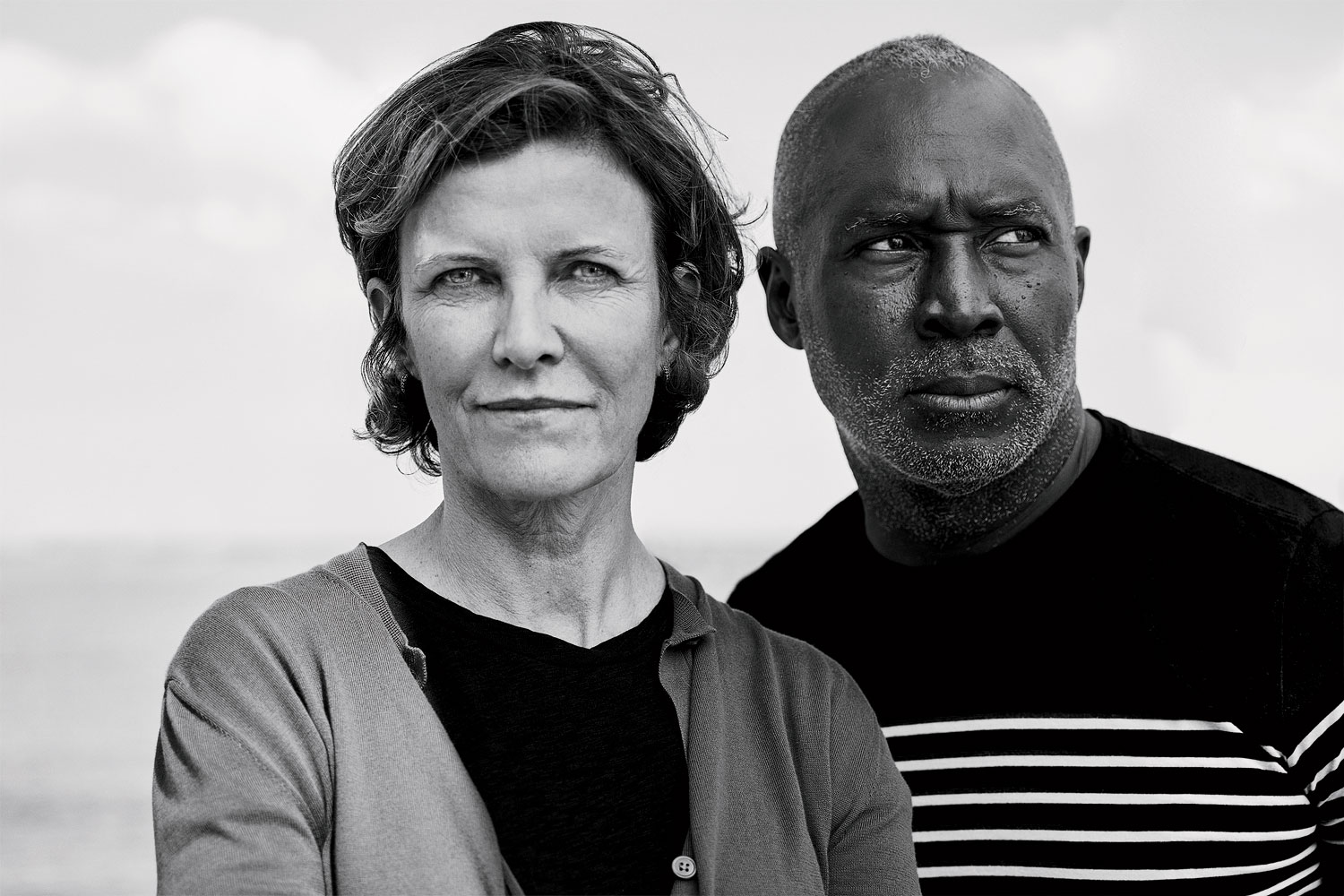Two months before the premiere of their first-ever collaboration, architect Jeanne Gang—she of Aqua Tower and Northerly Island fame—and performance artist and sculptor Nick Cave—he of the elaborate Soundsuit costumes—sat at an oversize conference table on the second floor of Navy Pier, hunched over Gang’s iPhone. Queued up were a series of three videos, each featuring a prototype set piece that Gang and her team designed for Cave’s September 13 performance at Navy Pier. “I like this reflective material,” said Cave, enlarging an image of a mirrored buoy-like object. “It picks up all this memory and its surroundings. The others don’t do that.” Gang nodded in agreement. “We can play with that.”
The idea to pair the two first arose when Navy Pier’s chief program and civic engagement officer Michelle T. Boone asked Cave if there were any architects he dreamed of working with. His answer: Jeanne Gang.
Though the two had met only once, the fandom was mutual, and when Boone called Gang, she signed on right away. Soon after, Navy Pier announced the event would open both Expo Chicago and the Chicago Architecture Biennial. But as for what the two culture giants have in mind? “I really don’t know what’s going to happen,” says Cave. “That’s the fun part.”
I know you’re still in the early stages of planning, but you at least have the basis of an idea. Can you explain what it is?
JG:Well, we started by imagining what kind of space Nick would perform in on Navy Pier. And since the pier is near the water, we were thinking about buoys and how they are used as markers of space. We thought, What if you had 200 buoys and they were all placed in relation to each other? The space between the objects could be [what Cave uses] as a stage.
NC:I liked this particular object because it can be moved anywhere on the property at Navy Pier. They can make a variety of shapes—a tunnel, an oval—and a performance could happen inside the objects or outside of them.
I’m really thinking about the devices that you use to draw people together: color and sound. I’m working with like 70 dancers who will be costumed. Maybe the performance is us just moving them around and creating different configurations. There’s all sorts of moments that can be experiential in lovely, beautiful ways.
Jeanne, your work is very sculptural and serene in nature, and Nick’s is vibrant, loud, and energetic. How do you balance that when working together?
JG:There’s a temporal quality to what Nick does, while architecture can be very static. But buildings get made alive through these experiences that people have within them. A city like Chicago gets turned on by performances like this one. That’s one reason I love cities—people within them are always looking for these moments of energy.
You both have an eye for unusual materials. How does it inform your work?
JG:A lot of times it’s about discovering the qualities of a material. Like wood: Wood has a certain bendability and heft to it. And that’s good for certain kinds of building. But recently I’ve also been thinking about the life of the material and how it connects us to history.
NC:I’m always looking for the language in materials and for the appropriate material to support an idea. Part of me always has to remain open to a material’s characteristics. It’s really about what supports the expression.
JG:That’s interesting, because sometimes I’ll start with a material and design the form based on it, but you’re saying the reverse—you have the form, then the material.
You are mutual fans. What draws you to each other’s work?
NC:Jeanne is a visionary, and that’s what I’m attracted to—that mindset of thinking in a peripheral way and not such a linear one. She’s a hustler.
JG:For me, Nick’s Soundsuits are so human and otherworldly, but they are also very architectural. It’s a kind of work that always appealed to me in a really deep way. His work is not something that sits in a museum; it’s wonderfully connected to space and it connects people to each other.
You could work anywhere at this point in your careers. What keeps you here?
NC:Chicago is this amazing incubator and place to experiment and try out things. I just use the city. I think that’s the beauty about it. There’s space that has not been invaded and dominated the same way New York has been. There’s still this amazing amount of room to explore and experiment.
JG:Totally. You can experiment, and that’s what facilitates my practice. You can access materials, you can take big spaces—that’s the beauty of the city as a lab.



